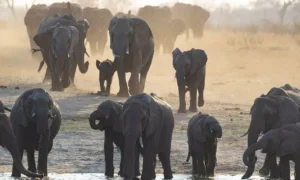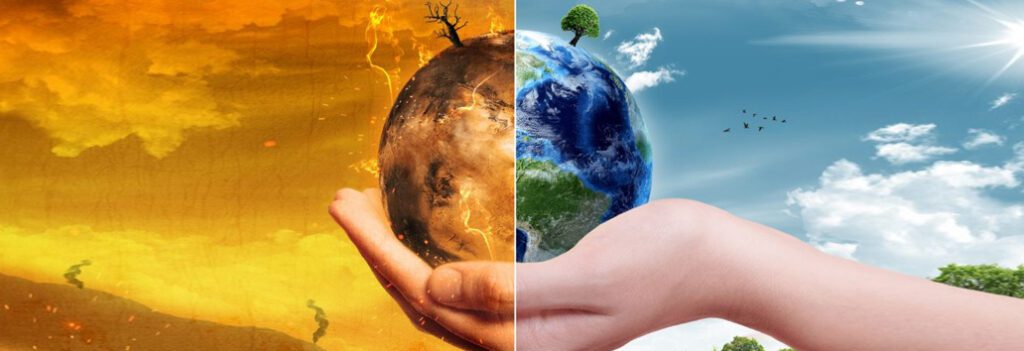Climate change has profoundly altered our world, and its impact on global wildlife has become a critical concern today. The effect of climate change on global wildlife is undeniable, with habitats rapidly changing and ecosystems under severe stress. In this blog, we will explore how the impact of climate change on global wildlife is transforming our planet, leading to drastic changes in biodiversity and threatening countless species with extinction.
Understanding Climate Change and Its Global Reach
Climate change is a long-term alteration in temperature and weather patterns, primarily driven by human activities such as fossil fuel consumption. The widespread effects of climate change have led to warmer temperatures, altered precipitation patterns, and increased frequency of extreme weather events. The impact of climate change on global wildlife is evident in the shifting habitats and migration patterns observed across the world.
Habitat Loss and Fragmentation: A Growing Concern
One of the most significant consequences of climate change is habitat loss, which is severely affecting global wildlife populations. As temperatures rise, habitats that were once suitable for specific species are becoming uninhabitable, forcing animals to migrate to new areas. The impact of climate change on global wildlife has resulted in the fragmentation of habitats, which isolates populations and increases their vulnerability to extinction.
Subheading: Arctic Wildlife: A Case Study in Climate Change Impact
The Arctic region is one of the most affected by climate change, with rising temperatures causing the ice to melt rapidly. The impact of climate change on global wildlife is clearly seen in the Arctic, where species like polar bears and seals are losing their ice-covered habitats. As the ice melts, these animals are forced to travel greater distances in search of food, leading to higher mortality rates and decreased reproduction.
Altered Migration Patterns: A Dangerous Shift
Climate change is altering the natural migration patterns of many species, disrupting the delicate balance of ecosystems globally. The impact of climate change on global wildlife has forced migratory species to change their routes or the timing of their migrations, leading to mismatches in food availability and breeding cycles. These changes are detrimental to species that rely on specific environmental cues to survive and reproduce.
Subheading: Birds and Climate Change: A Global Shift in Migration
Birds are particularly sensitive to climate change, with many species experiencing shifts in their migration patterns due to altered temperatures and food availability. The impact of climate change on global wildlife has led to earlier migrations, causing birds to arrive at their breeding grounds before their food sources are available. This timing mismatch can result in poor breeding success and a decline in bird populations.
Ocean Acidification and Marine Life: A Silent Crisis
The oceans have absorbed much of the excess carbon dioxide released into the atmosphere, leading to ocean acidification. This phenomenon is having a severe impact on global wildlife, particularly marine species that rely on calcium carbonate for their shells and skeletons. The impact of climate change on global wildlife is evident in the decline of coral reefs, which are essential habitats for a wide variety of marine life.
Subheading: Coral Reefs: The Rainforests of the Sea Under Threat
Coral reefs are often referred to as the rainforests of the sea due to their incredible biodiversity. However, the impact of climate change on global wildlife is devastating these ecosystems, with coral bleaching becoming increasingly common. As ocean temperatures rise, corals expel the algae that live within their tissues, leading to bleaching and, eventually, the death of the coral. This loss has a cascading effect on the entire marine ecosystem, as many species rely on coral reefs for food and shelter.
Extreme Weather Events: A New Normal for Wildlife
The frequency and intensity of extreme weather events, such as hurricanes, droughts, and wildfires, have increased due to climate change. The impact of climate change on global wildlife is becoming more apparent as these events disrupt ecosystems, destroy habitats, and lead to the displacement of species. Wildlife must now cope with these extreme conditions, which can lead to increased mortality and a decline in populations.
Subheading: Wildfires and Their Impact on Forest Ecosystems
Wildfires have become more frequent and severe due to rising temperatures and prolonged droughts, causing significant damage to forest ecosystems. The impact of climate change on global wildlife is particularly evident in areas affected by wildfires, where species lose their habitats and food sources. While some species may adapt to these changes, others face the risk of extinction as their habitats become increasingly inhospitable.
Adaptation and Survival: Can Wildlife Keep Up?
As climate change continues to alter the environment, wildlife must adapt to survive in a rapidly changing world. The impact of climate change on global wildlife has led to some species evolving new behaviors or physiological traits to cope with the new conditions. However, not all species can adapt quickly enough, leading to a decline in biodiversity and the potential loss of many species.
Subheading: Evolution in Action: Species Adapting to Climate Change
Some species are beginning to show signs of adaptation to the changing climate, demonstrating the impact of climate change on global wildlife in real-time. For example, certain species of insects are now breeding earlier in the year, while some plants are flowering sooner to take advantage of the warmer temperatures. However, these adaptations may not be sufficient to counter the rapid pace of climate change, putting many species at risk.
Conservation Efforts: A Ray of Hope
Despite the challenges posed by climate change, conservation efforts are underway to mitigate its Influence on global wildlife. The impact of climate change on global wildlife can be reduced through habitat restoration, the creation of wildlife corridors, and the protection of endangered species. Governments, NGOs, and local communities are working together to implement strategies that will help wildlife adapt to the changing environment.
Subheading: Protecting Endangered Species: A Global Priority
The Influence of climate change on global wildlife has made it more critical than ever to protect endangered species. Conservationists are focusing on preserving habitats, creating breeding programs, and raising awareness about the plight of species at risk. These efforts are essential in ensuring that future generations can enjoy the biodiversity that our planet has to offer.
Conclusion: The Path Forward
The Influence of climate change on global wildlife is a pressing issue that requires immediate attention and action. If we fail to address the impact of climate change on world wildlife, we risk losing countless species and the ecosystems that support them. It is essential to continue conservation efforts, reduce greenhouse gas emissions, and promote sustainable practices to protect our planet’s wildlife. By working together, we can mitigate the Effect of climate change on global wildlife and ensure a future where biodiversity thrives.
In conclusion, the Effect of climate change on global wildlife is undeniable, and its effects are being felt across the globe. From habitat loss and altered migration patterns to ocean acidification and extreme weather events, the challenges are immense. However, with concerted efforts and a commitment to conservation, we can protect the world’s wildlife from the devastating effects of climate change. The impact of climate change on global wildlife must remain a top priority as we strive to preserve the planet’s natural heritage for generations to come.
“Thank you for visiting our blog! We hope you found our content informative and engaging. Stay updated with our latest posts, tips, and news by following us on Twitter and Facebook.”



